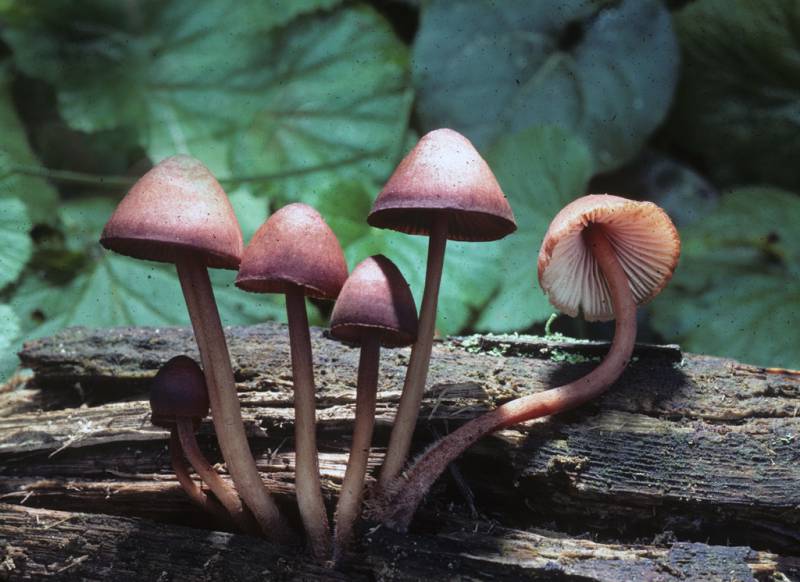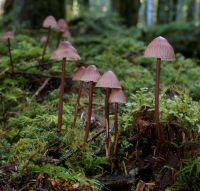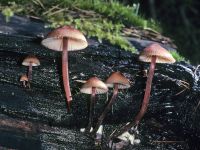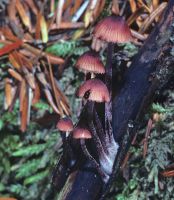Substrate: The fruitbodies grow in groups, often in loose clusters, on both hardwood and conifer logs and can get quite large (for a mycena).
Spores: spores are broadly ellipsoid, 7--12 x 4--7 µm
Conservation Status: Not of concern
Mycena haematopus is one of a group of mycenas characterized by containing a colored fluid, or latex, that is exuded when the fruitbodies are broken or cut. As its specific epithet indicates, the fluid in M. haematopus is dark blood-red in color and is most easily seen by breaking the stipe near its base (haem- is blood and -pus is foot in Greek). The edge of the cap often is finely scalloped, the spores are broadly ellipsoid, 7--12 x 4--7 µm, and the cheilocystidia are somewhat fat with extended necks that sometimes are branched. M. sanguinolenta similarly exudes a red latex, but is smaller and more slender, consistently has red-edged gills (those of M. haematopus sometimes are and sometimes are not), and grows scattered on needle litter.
PNW Herbaria: Specimen records of Mycena haematopus in the Consortium of Pacific Northwest Herbaria database.
CalPhotos: Mycena haematopus photos.








